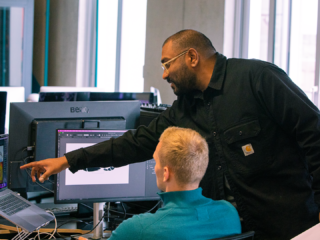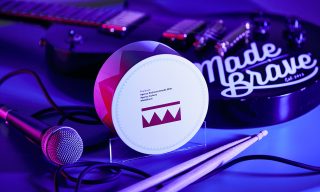Is it just me, or is the advertising industry’s existential crisis more intense than ever right now?
The industry has fallen from being a powerful driver of cultural change to a backseat passenger. We don’t drive and steer culture anymore—now we follow, and play catch up.
Don’t get me wrong, in terms of existential crises, there’s a lot of it going about. Our very existence as human beings is currently facing a thoroughly apocalyptic reality. A war in Europe, the second ‘once-in-a-lifetime’ financial collapse since 2008, and perhaps the most depressing yet—global warming. So, yeah, that is a lot. Like, a lot, a lot.
So, really, the existential crisis of the ad industry isn’t so bad, all things considered. Because I believe we can actually still turn it around. For one, we should not be drawing our blueprints for the future of advertising from the same institutional structures that have been around since before the first world war.
There’s a reason why today’s audiences are more connected to what they consume, and now more than ever.
The internet of things has democratised the conversation, giving agency to a plethora of voices in what would’ve otherwise been closed spaces. A queer black digital creator has more reach into our private lives and our homes than any mass-market news title and, a trans writer who happens to champion body hair and dresses outside of gender norms has suddenly found a voice that—quite literally—transcends borders. Inversely, it’s easier than ever for far-right xenophobes to spread their beliefs and stoke flames of hatred with the potential to cause real damage and spread like wildfire.
Unfortunately, brands still think they can control the conversation. In reality, brands can guide and nudge, but ultimately, they’re at the mercy of consumers and their voices.
We need to normalise differences and create spaces where a woman can easily be a successful creative and a mother, and a brown queer/trans person can feel confident bringing their authentic self into the boardroom.
How has an industry that once was at the forefront of culture, taken a back seat?
Personally, I think the institution of the agency has not moved with the times. Where social media has become a platform for the many and varied, the space in our industry (our departments) is still dominated by a select few.
We can launch as many Diversity and Inclusion initiatives as we want; invite the most marginalised and underrepresented voices to our lunchtime chats; even show data on how our network is more diverse than the competitors. But, the reality is, that if the environment in which these voices exist does not give them agency to bring their whole selves to the table, we will never be as relevant as we could be. As we should be.
I am lucky enough to have finally found a home (MadeBrave) that accepts and celebrates me as I am while providing a space for me to grow and learn. However, since my stint as a D&AD shift mentor, I realise that not everyone from diverse backgrounds has that opportunity in the bigger agencies.
So, how can agencies provide a more inclusive environment?
We need to normalise differences and create spaces where a woman can easily be a successful creative and a mother, and a brown queer/trans person can feel confident bringing their authentic self into the boardroom. Our differences should not be your USP, it should be part of who you are as a business. That will only give credence to the work we do for our clients.
In my eyes, the future of advertising lies in embodying the wider culture in which our audiences exist. Being on the inside and looking out, not on the outside looking in. That is how we unlock the next phase of impact our industry has on the world we live in. Whilst diverse casting in our work is still important for representation, we can only truly make an impact if we rethink the way our businesses are structured and the spaces we create internally.
Change is no longer an option.
Original here: Creative Brief



